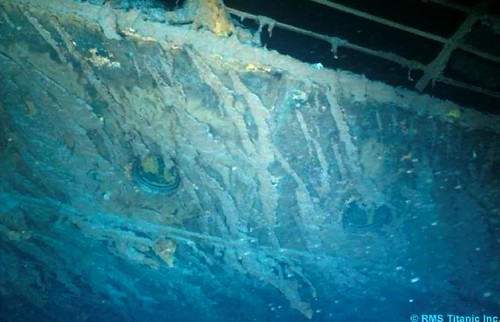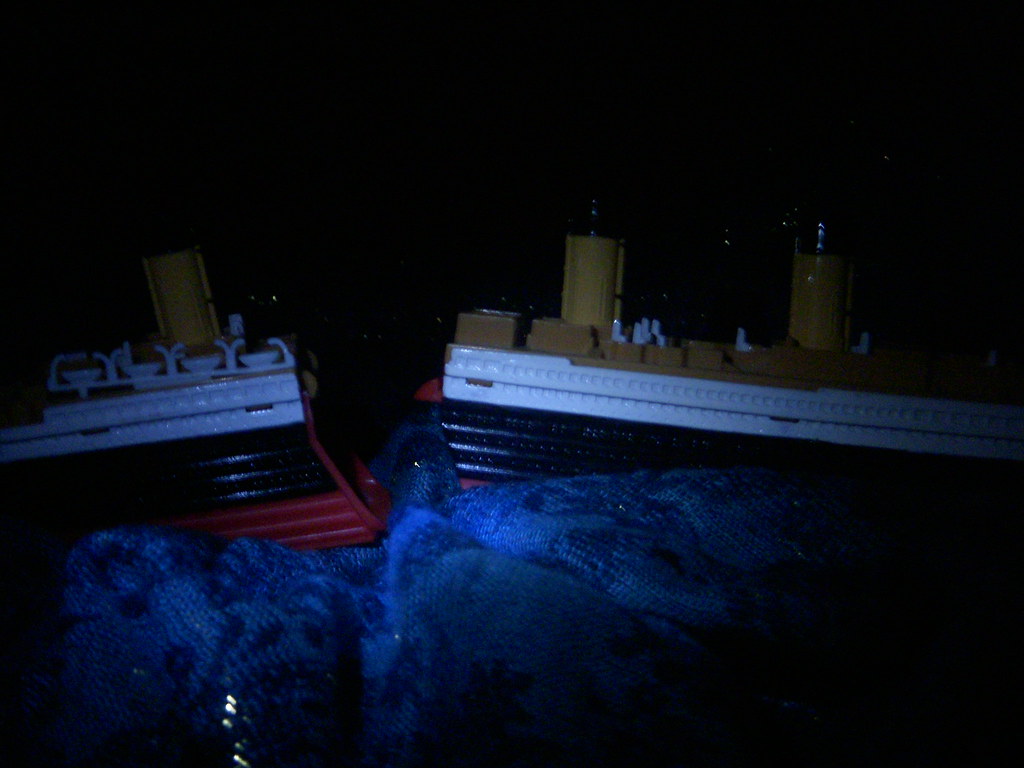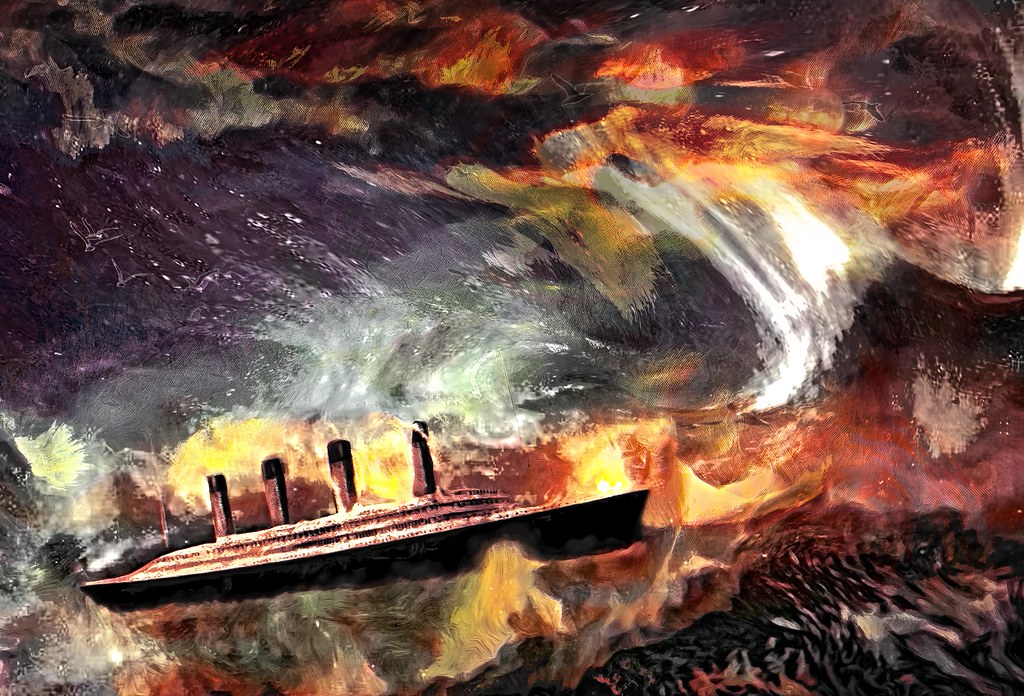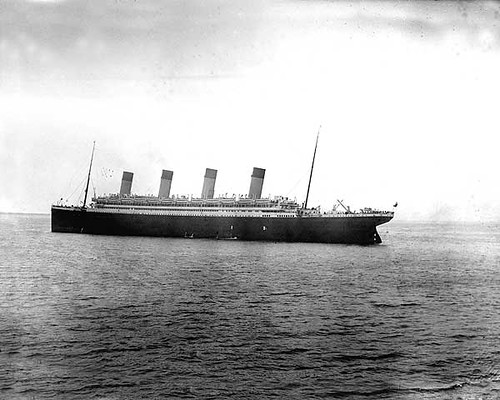World’s most famous shipwreck unveiled like never before.
The Titanic, the world’s most famous shipwreck, has been revealed in unprecedented detail thanks to a new 3D scan. The scan, which was conducted by a team of researchers from the University of Southampton and the Woods Hole Oceanographic Institution, provides a detailed view of the ship’s hull, superstructure, and interior. The scan also shows the damage that the ship sustained when it sank in 1912.
The scan was created using deep-sea mapping technology. A remotely operated vehicle (ROV) was equipped with a high-resolution camera and sent to the Titanic’s resting place on the ocean floor at a depth of 3,800 meters. The ROV took over 700,000 images of the ship, which were then stitched together to create a 3D model.
The 3D model provides a unique view of the Titanic. It allows viewers to explore the ship from every angle and to see the damage that it sustained when it sank. The scan also reveals new details about the ship’s construction and design.
The hope is that the 3D scan will shed new light on the Titanic’s sinking. The scan can be used to study the ship’s hull and superstructure to determine how it sustained damage when it hit the iceberg. The scan can also be used to study the ship’s interior to determine how passengers and crew were able to survive the sinking.
The 3D scan is a major breakthrough in our understanding of the Titanic. It provides a wealth of new information about the ship and its sinking. The scan is a valuable resource for historians, archaeologists, and filmmakers.
The sinking of the Titanic was a tragedy that claimed the lives of over 1,500 people. The ship was on its maiden voyage from Southampton to New York when it struck an iceberg and sank in the North Atlantic Ocean.
There are still many questions about the sinking of the Titanic. Some of these questions include:
- Why did the Titanic hit the iceberg?
- Why were there not enough lifeboats for everyone on board?
- What could have been done to prevent the sinking?
Parks Stephenson, a Titanic analyst, believes that the new 3D scan of the Titanic can help to answer some of these questions. He said that the scan is “one of the first major steps to driving the Titanic story towards evidence-based research – and not speculation.”
The scan provides a detailed view of the Titanic’s hull, superstructure, and interior. It also shows the damage that the ship sustained when it sank. This information can be used to study the ship’s design and construction, and to determine how it could have been prevented from sinking.
The scan is a valuable resource for historians, archaeologists, and filmmakers. It will help them to learn more about the Titanic and its sinking. It will also help them to create more accurate and realistic depictions of the ship.

The sinking of the Titanic was a tragedy, but it can also be a learning opportunity. The new 3D scan of the Titanic can help us to understand what happened, and to prevent similar tragedies from happening in the future.
The Titanic has been explored by many people since it was discovered in 1985. However, the ship is so large that it is difficult to see the entire wreck from the surface of the water. Cameras can only capture small parts of the ship at a time, and it is impossible to get a complete view of the wreck.
A new scan has been created that captures the entire wreck of the Titanic. The scan was created by Magellan Ltd, a deep-sea mapping company, and Atlantic Productions, who are making a documentary about the project.
The scan was created using remotely operated vehicles (ROVs). The ROVs were sent down to the bottom of the ocean, where they took over 700,000 images of the Titanic. The images were then stitched together to create a 3D model of the wreck.
The 3D model shows that the Titanic is in two parts. The bow and the stern are separated by about 800 meters (2,600 feet). A large debris field surrounds the broken vessel.
The scan is a major breakthrough in our understanding of the Titanic. It provides a complete view of the wreck, which has never been seen before. The scan will help historians and archaeologists to learn more about the Titanic and its sinking. It will also help filmmakers to create more accurate and realistic depictions of the ship.
The scan is a valuable resource for anyone who is interested in the Titanic. It is a reminder of the tragedy that happened over 100 years ago, and it is a testament to the resilience of the human spirit.
According to Magellan’s Gerhard Seiffert, the largest underwater scanning endeavor he has ever embarked on, the expedition aims to overcome numerous challenges.
With a depth of almost 4,000m, the site presents difficulties including strong currents and the need to avoid touching the wreck to preserve its integrity.
Another hurdle involves meticulously mapping every square centimeter, even mundane areas like mud on the debris field, to provide comprehensive context.

Despite these obstacles, the scan succeeds in showcasing the grandeur of the ship while capturing intricate details such as the serial number on a propeller.
Even after a century of being lost, the bow of the Titanic remains easily identifiable, adorned with rust stalactites. Atop it rests the boat deck, where a vast opening offers a glimpse into the void where the grand staircase once stood.
In stark contrast, the stern presents a disordered jumble of twisted metal. This section of the ship collapsed and spiraled into the seabed.
Within the debris field surrounding the wreckage, a scattering of various items can be observed. Among them are intricate metalwork pieces, statues, and unopened champagne bottles. Additionally, personal belongings can be found, including numerous shoes resting on the sediment.
Parks Stephenson, a long-time Titanic researcher, expressed astonishment upon viewing the scans, stating that they provided an unprecedented perspective of the wreck. He emphasized that the scans allow for a comprehensive and contextual understanding of the entire ship, unveiling its true condition.
Stephenson pointed out that studying these scans could potentially yield fresh insights into the events surrounding the Titanic’s ill-fated night in 1912. He highlighted the lack of understanding regarding the nature of the collision with the iceberg, challenging the common portrayal in movies. He suggested that the ship may have grounded on the iceberg rather than a direct impact on its starboard side.
Furthermore, exploring the stern through the scans could provide valuable information about the mechanics of how the ship descended and came into contact with the sea floor.
The relentless effects of the sea are deteriorating the Titanic wreck, as microbial activity and disintegration take their toll. Historians acknowledge the urgent need to gain a comprehensive understanding of this maritime disaster before it is too late.

However, the newly captured scan effectively freezes the wreck in time, providing experts with the opportunity to meticulously examine every minuscule detail. There is optimism that the Titanic may still reveal its hidden secrets through this invaluable resource.
SOURCE: BBC


